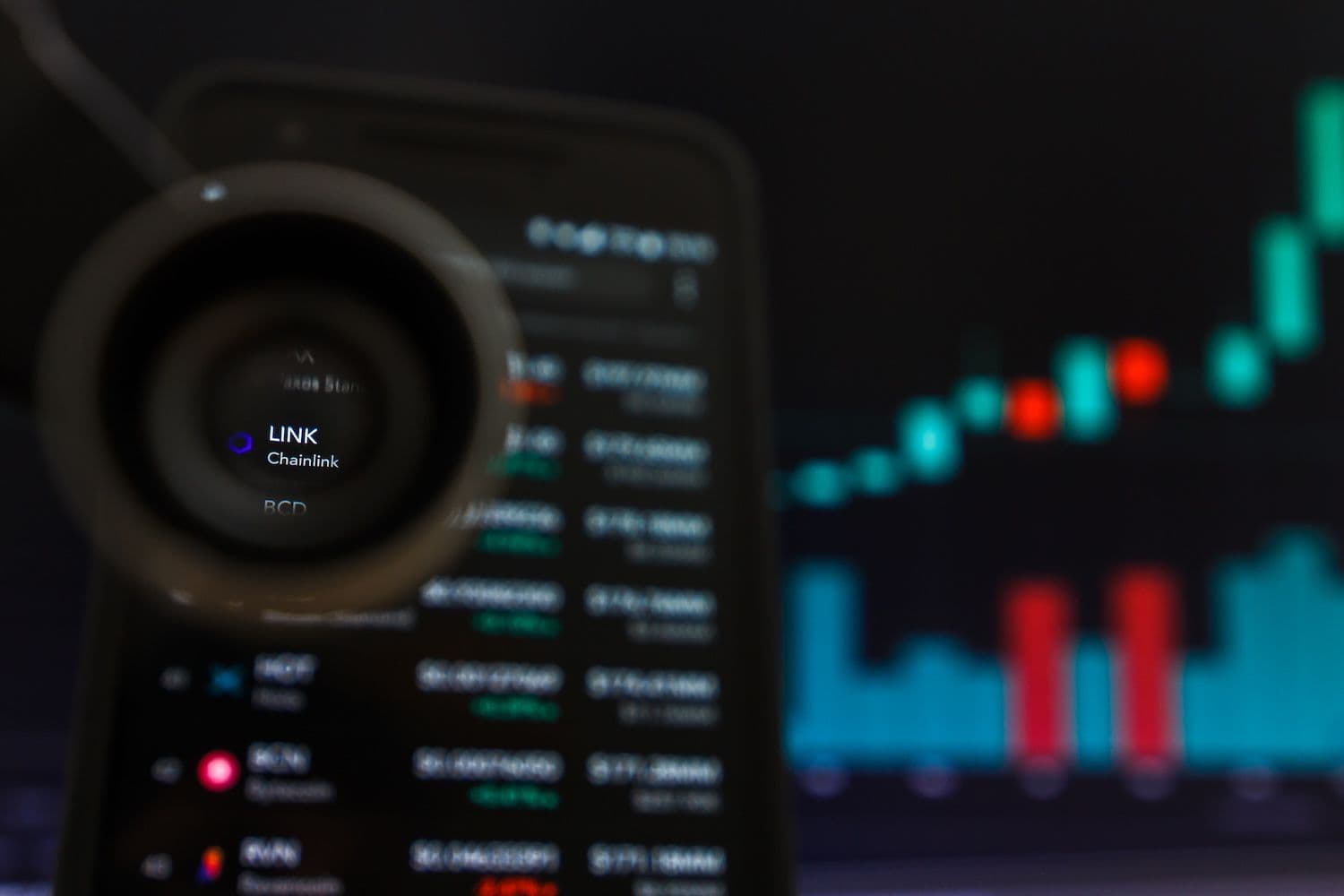Chainlink has emerged as a standout performer in the cryptocurrency market, posting a 50% gain over two weeks as the real-world asset tokenization sector expands beyond $25 billion. The oracle network's LINK token reached $24, positioning the platform as what analysts describe as the most obvious large-cap investment opportunity in the current market cycle.
What to Know:
- Chainlink holds an 84% market share of oracle services on Ethereum and 68% across all decentralized finance protocols
- The tokenized real-world asset market has grown to over $25 billion, with major institutions like BlackRock driving adoption
- LINK token trades 55% below its May 2021 all-time high of $52.70 despite recent gains
Market Position and Institutional Momentum
Crypto analyst Miles Deutscher highlighted Chainlink's unique position Thursday, noting that "LINK might be the most obvious large-cap play for this cycle, yet most people will miss it." The assessment comes as traditional financial institutions increasingly recognize limitations in existing settlement systems.
Wall Street firms are moving toward blockchain-based solutions to address inefficiencies in the legacy SWIFT network. BlackRock and other institutional players are actively pursuing tokenization initiatives, while corporations including Stripe and Circle are developing proprietary blockchain infrastructure.
"The fragmented, multi-chain world requires a universal translator, and Chainlink provides the solution," Deutscher explained.
This positioning has established Chainlink as the industry standard for price oracles across multiple blockchain networks.
Technical Infrastructure and Adoption Metrics
Chainlink's dominance extends across both Ethereum and broader decentralized finance ecosystems. The network maintains an 84% market share on Ethereum, the largest blockchain platform by total value locked. Across all DeFi protocols, Chainlink commands 68% of the oracle market, demonstrating its critical role in connecting blockchain networks to external data sources.
Oracle services form essential infrastructure for tokenized assets, providing the price feeds and data verification necessary to bring real-world asset values onto blockchain networks. As tokenization expands into traditional financial markets, oracle reliability becomes increasingly crucial for institutional adoption.
The network has secured integrations with traditional finance institutions while developing what analysts describe as a "flywheel effect" through its tokenomics model. This mechanism creates automated buying pressure as adoption increases across both decentralized and traditional finance sectors.
Price Performance and Technical Analysis
LINK has returned to $24 following a volatile trading period, representing a 50% increase since early August. The surge coincides with increased on-chain activity, including the highest number of active LINK addresses in eight months and the most whale transactions in seven months, according to blockchain analytics firm Santiment.
Despite recent gains, the token remains significantly below its historical peak.
LINK trades 55% lower than its May 2021 all-time high of $52.70, indicating substantial room for recovery if current momentum continues.
Technical resistance appears at the $30 level, where LINK last encountered selling pressure in December 2024. Breaking through this level could open the path toward three-figure price targets that some analysts have begun discussing.
Understanding Oracle Networks and Tokenization
Oracle networks serve as bridges between blockchain systems and external data sources, providing the price feeds and information that smart contracts require to function. Without reliable oracles, blockchain applications cannot access real-world market data, making these services essential infrastructure for the cryptocurrency ecosystem.
Real-world asset tokenization involves converting traditional financial instruments, commodities, or other assets into blockchain-based tokens. This process requires continuous price feeds and data verification, creating sustained demand for oracle services as the tokenization market expands.
The tokenomics model underlying Chainlink creates what developers describe as a "perpetual, automated buyback mechanism." As adoption increases across both decentralized finance and traditional finance sectors, more LINK tokens enter the Chainlink Reserve, potentially creating sustained buying pressure.
Outlook and Strategic Positioning
Deutscher emphasized Chainlink's strategic advantage in an uncertain competitive landscape, noting the difficulty in predicting dominant blockchain platforms or successful real-world asset applications. "It's hard to know what the winning layer-1 will be, especially with the raft of new corporate chains entering the market, and we also don't know what the winning RWA DApp will be," he stated.
"But we know that Chainlink is powering it all. It becomes the ultimate pick-and-shovel play," Deutscher concluded, comparing the network to essential infrastructure providers during historical economic expansions. The assessment reflects growing recognition that oracle services may prove more durable than specific blockchain platforms or applications, as tokenization requires reliable data feeds regardless of underlying technology choices.
Closing Thoughts
Chainlink's 50% fortnightly surge reflects its established position as dominant oracle infrastructure amid accelerating real-world asset tokenization. With an 84% Ethereum market share and backing from major institutions, the network appears positioned to benefit from the multi-trillion dollar shift toward blockchain-based traditional assets, though significant technical resistance remains at current price levels.

